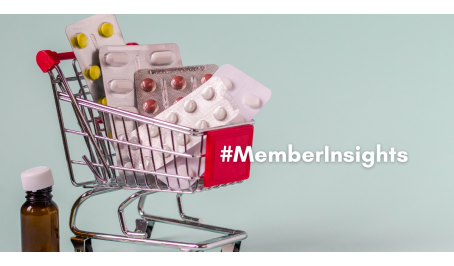Why Are Prescription Drugs So Expensive?
This #MemberInsights article is authored by Care2Care International.

Drug costs are steadily growing and now represent between 20 and 30% of a health plan expenditure, mostly for two reasons:
- drug prices in the US (particularly specialty drugs) are by far higher than in every other developed country;
- The second is that PBMs, middlemen created in the 60s to help insurers and employers manage the pharmacy component of their health plans, seem to have developed practices playing against the interests of their clients.
- US HIGH DRUG PRICES
In a 2019 report, strikingly titled “A bitter pill to swallow”, the House’s Ways and Means Committee confirmed clearly this reality, illustrated by the chart below:
US Prices are now 3 and 5 times higher than in other high-income countries!

Looking further into this issue we find a contrasted situation and a clear shift between:
- Generics: thousands of medicines, whose prices are often lower than in other countries, due to the intense competition prevailing in this sector,
- and Specialty drugs, a relatively small number of drugs, covered by active patents, with limited competition.
“This situation of a lack in competition is general to the US economy”, wrote Thomas Philippon, a French economist, professor of finance at NYU Stern School of Business (The Great Reversal, How America Gave Up on Free Markets, Belknap Press of Harvard University Press,2019.)
He sees it as the consequence of the “growing concentration of economic and political power in the hands of too few corporations and individuals” as quoted by Rana Foroohar, a Financial Times Editor.
A solution often cited, especially under the former administration, has been to allow states and individuals to import drugs from nearby Canada. But despite several executive orders signed by the former president, this project went nowhere, and as of today, only one state has been able to put such a program in place: Utah in 2020 for government employees.
In contrast, the reality is that today, and for many years, numerous local organizations, school boards, and municipalities have put in place programs allowing their health plan members to buy drugs abroad, under the personal importation exemption.
- PHARMACY BENEFITS MANAGERS ROLE
Originally, the main function of Pharmacy Benefit Managers (PBMs) was to serve clients by providing and administrating formularies and exclusion lists at the lowest cost possible.
The services of PBMs are used by private employer’s health plans, individual States, and the federal government to process and administer prescription drug claims for insurance companies and plan sponsors for a small fee per claim.
Today, 3 huge companies dominate the market with a total market share of around 75%.

Owning, or being owned by large carriers, they have also developed Specialty pharmacy networks which provide them a growing part of their huge profits, generating real conflicts of interest. With opaque, sometimes even hidden multiple remunerations, while bragging about high rebates returned to plans, their reputation has recently been tainted by revelations about their very lucrative practices.
Fortunately, a new generation of transparent, pass-through, progressive PBMs is emerging in the marketplace. They are focused on driving lower costs and better health outcomes by highlighting fixes to flawed PBM approaches. The savings provided can be in excess of 50% compared to the national average pharmacy costs.
To help our readers better understand how to navigate this very specific and complex market and make the right choices, we will dedicate another paper to explain its intricacies. We will attempt to define efficient criteria leading to effective guidance and huge potential savings for their health plans.

